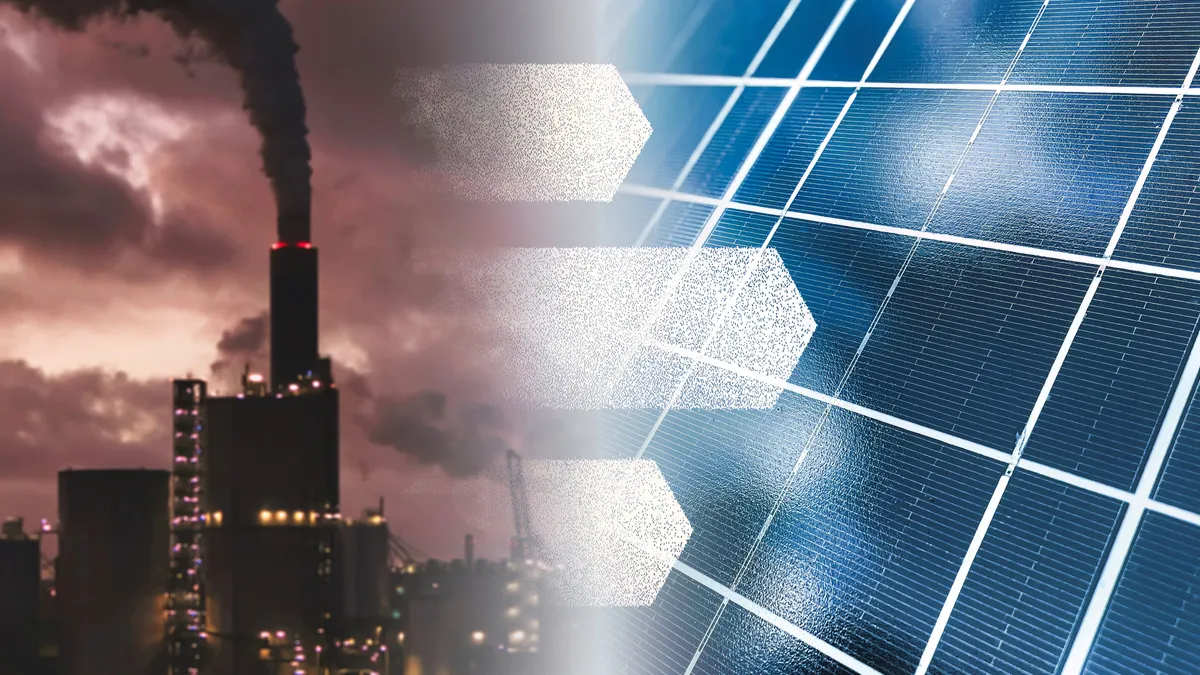Michael Jung is executive director and Adam Agalloco is director of climate change and sustainability at the ICF Climate Center.
With COP28 upon us, many global leaders are focused on how we’ll achieve the Paris Agreement goal to limit warming from climate change to 1.5°C. It can be difficult to grasp the scale of this challenge. Even a country with the economic strength, scientific knowledge, and innovative leadership of the U.S. faces steep challenges to achieving its climate goals.
In the U.S., the bipartisan infrastructure law and Inflation Reduction Act will indeed reduce greenhouse gas emissions. Together, these laws provided the largest investment of federal funding to advance clean energy and decarbonization, and address climate impacts in U.S. history. Still, multiple studies show those laws will get the U.S. only part of the way to its goal of a net-zero economy by 2050.
So, what will it actually take to get to net zero? We took on that question in a new study. What our data showed surprised even us.
The U.S. could reduce nearly 90% of greenhouse gas emissions by 2050 without any Hail Mary innovations. Three solutions that exist today could get us nearly all the way there: transportation electrification, building decarbonization and clean energy.
Transportation electrification
Around two million EVs were on U.S. roads at the end of 2022. Increasing EV adoption by 100X to about 240 million EVs on the road could put the U.S. on a path to net zero by 2050. While that number sounds daunting, it’s only about 2.5X the number of EVs we’re already projected to have on the road by 2050.
To make widespread transportation electrification a reality, battery manufacturing would need to scale up considerably. Building the battery supply chain would require new sources of minerals primarily available outside the United States. Automakers and other stakeholders would also need to find ways to continue to spur consumer adoption of EVs. If EV demand falls short in the years to come, transportation electrification would fall short as a decarbonization solution.
The U.S. would also need to scale public EV charging stations. Utilities would need to expand the electric grid’s capacity to power all those new EVs while implementing sophisticated electric load management strategies to maintain a reliable electric grid.
Building decarbonization
There are roughly 110 million buildings of all shapes and sizes in the United States. To maximize the decarbonization potential of buildings, it would be necessary for nearly all U.S. buildings to undergo some type of energy efficiency or electrification measure by 2050.
In total, more than one billion decarbonization measures would need to be installed in U.S. buildings.
These decarbonization measures include relatively low-cost lighting upgrades, sealing air leaks, and installing weatherstripping around windows and doors. But they also include much more costly upgrades from high efficiency appliances, HVAC systems, deep energy retrofits, and transitioning entire buildings from natural gas to electricity.
While economic incentives, such as those in the IRA, could accelerate building decarbonization, the transition is vastly complex. For example, buildings turn over very slowly. While some 5% of cars on the road turn over each year, only a fraction of a percent of buildings undergo major renovations or are demolished annually. This means that decarbonizing existing buildings may naturally happen in a somewhat piecemeal fashion.
Clean energy
Electrifying transportation and buildings can reduce greenhouse gas emissions, even with the current mix of power generating resources in the U.S. However, electrification becomes much more effective at reducing emissions when paired with clean electricity from solar, wind and other resources. Put another way, a low carbon power sector is a cornerstone solution that amplifies decarbonization across the entire U.S. economy.
Even with all those solar panels soaking up rays and wind turbines spinning, the sun isn’t always shining and the wind isn’t always blowing. In order to create a balanced, reliable supply of renewable electricity, storage capacity from sources such as batteries would also need to rise from a negligible amount in 2022 to hundreds of gigawatts by 2050. In total, the U.S. would need to increase renewable energy to 85% of total electricity generation by 2050.
In parallel with the increase in renewable electricity, the U.S. would need to reduce the share of natural gas, coal and other remaining unabated fossil fuels sources used for power generation from 60% in 2022 to nearly zero in 2050.
In total by 2050, over 85% of all U.S. generation capacity would come from renewable wind, solar and hydro resources, with the remaining amount coming from low-or zero-carbon resources.
Much as a clean power grid serves as an essential ingredient enabling other decarbonization solutions, clean energy in the form of low-carbon fuels, such as renewable natural gas and hydrogen, also plays a key role in driving down emissions across a range of sectors.
The path forward
The scenario we’ve outlined to put the U.S. on a path toward a net zero economy is possible but it’s not the only way to get there. If the U.S. were to pursue this scenario, then it would require steep emission reductions that trigger complex challenges, financial costs and trade-offs. The federal government, utilities, state and local governments, NGOs, community-based organizations, the American public and the private sector would all need to play a role in achieving a net zero economy while also maintaining energy reliability, increasing energy resilience, mobilizing financing and ensuring equity, among other priorities for the country.
As COP28 proceeds, it will be important to remain clear-eyed about the costs and complexities of transitioning to a net-zero economy. But by navigating this intricate web, the U.S. and other countries could weave a future that sidesteps the worst impacts of climate change.






















